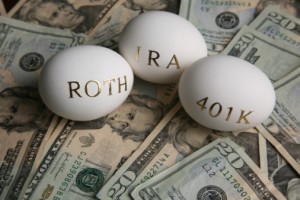The Real Costs of Your 401K Revealed
401(k) Fees Revealed – Get Ready for a Shock!
If you have a 401(k) account with a U.S. broker, you are about to get the shock of your life. When you receive your next quarterly statement, probably between Sept. 30 and Nov. 15, do not open it without taking precautions!
I suggest you take the envelope over to the sofa and sit down, remove any sharp objects, or anything which could be thrown against the wall in anger, take a deep breath, and then open it. You are sure to find a whole host of fees and expenses that you have been paying all along and had no idea. You will now learn exactly why you have lost money, or why your returns were less than stellar, and how much of that was due to hidden fees charged by the broker who was working so diligently on your behalf.
Why the new disclosures? For the first time since Congress laid the groundwork enabling these plans in 1974, all of your fees must be disclosed. Previously, these statements showed investment returns after fees were deducted, but did not show the fees themselves — probably leading you to believe that your investments weren’t returning as much as they actually were.
Now, because of new government regulations, you’ll be able to see how your investments have done before fees are deducted because actual returns and costs will be displayed in separate columns. You will have a clear picture of how your investments did and how much was taken out for management, in transaction fees, etc.
Ok, you just found out that you have been grabbing your ankles for a very long time. What can you do with this information? If you have a 401(k) with your current employer, you may be out of luck. You can storm in to your HR department and demand that they find a firm with more reasonable fees. Enough of the local broker who buys dinner and drinks for HR guy! If they refuse, you have little recourse.
If you have a 401(k), or any other type of retirement account, with a former employer you can take over control, eliminate 90% of the fees, and make your own investment choices by moving it in to a Checkbook LLC. You simply form a U.S. LLC or international LLC and transfer the retirement account from your current provider in to that entity.
Note that the law requires your retirement account have a licensed agent involved. Thus, there will be a U.S. administrator and minor fees with the LLC. However, the administrator will not be involved in your investment decisions and he will not take a piece each time you make a trade. His primary role in the Checkbook LLC is to handle annual reporting to the IRS. You tell him how your investments did at the end of the year and he reports to the government.
You have two choices with the Checkbook LLC. You can use a U.S. LLC and make investments in the United States, or you can use an international LLC and make investments outside of the U.S. of A. With the international LLC, you can hold your funds in any bank or brokerage around the world, in any currency or currencies, and make any investment you see fit.
For example, the international LLC can invest in real estate in Ecuador, have a bank account in Belize, trade currency through a broker in New Zealand, and own gold and other precious metals in a vault in Switzerland. The investment options are unlimited, and the decisions are yours. You will not be required to get the permission of the administrator…you simply write the check (hence the name, Checkbook LLC) or send the wire to complete the transaction.
Of course, there are some basic rules. For example, you must manage the LLC for the benefit of the retirement account.
In other words, you must handle it as an investment account, and not take any money for personal use. You can purchase real estate as an investment, but you cannot live in the property…you must rent it out to an unrelated person at fair market rates.
If you would like checkbook control over your retirement accounts, please contact Premier Offshore Investor at (619) 483-1708, or email info@premieroffshore.com. We will send you a detailed presentation with all the rules, answer any questions, and guide you through the process.




